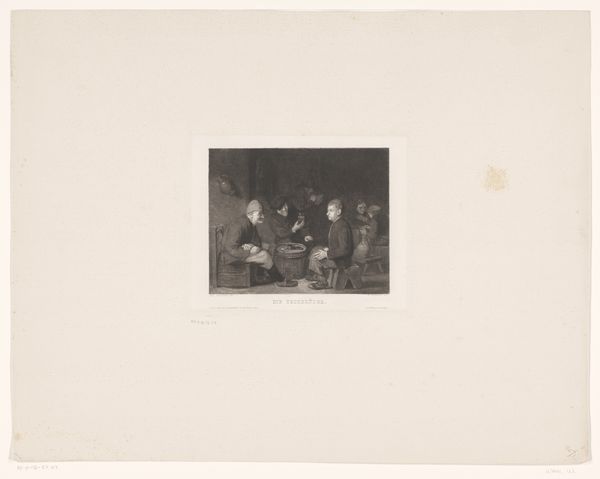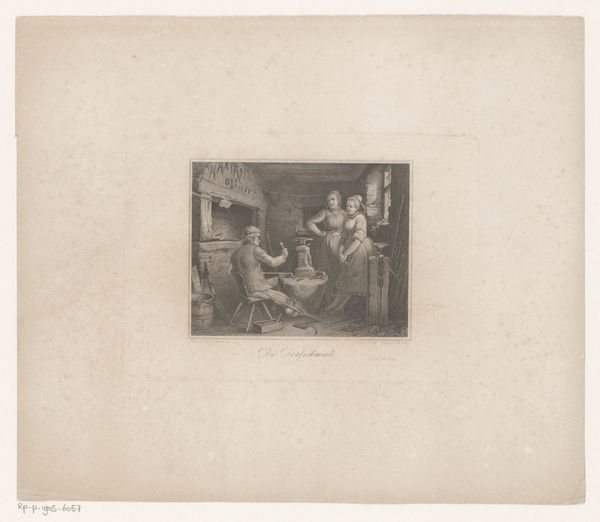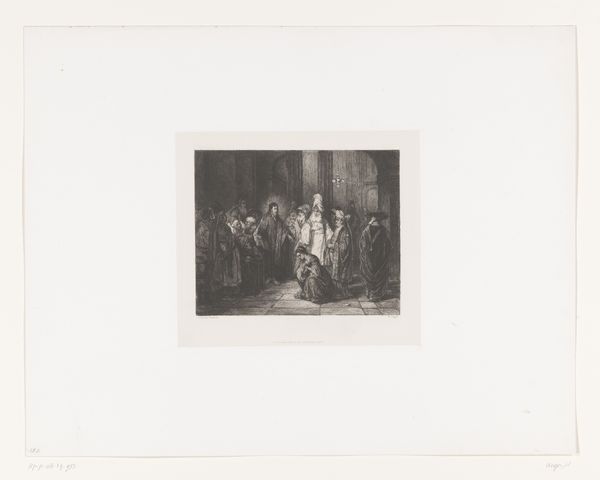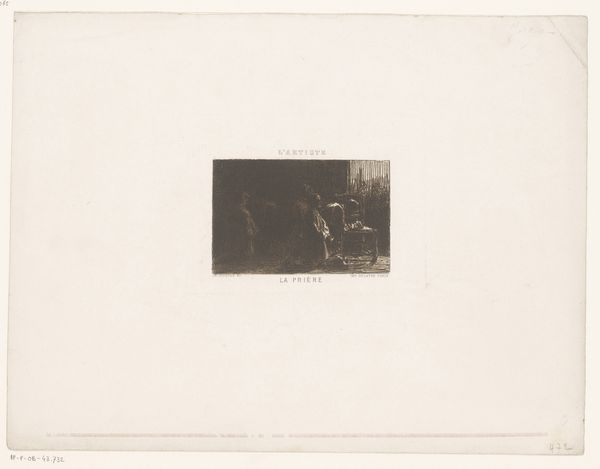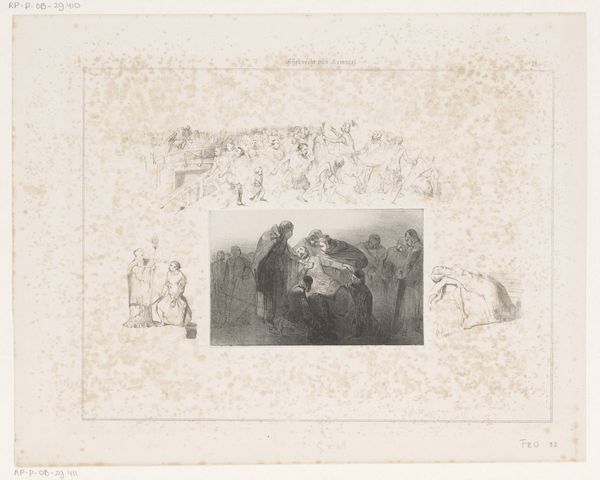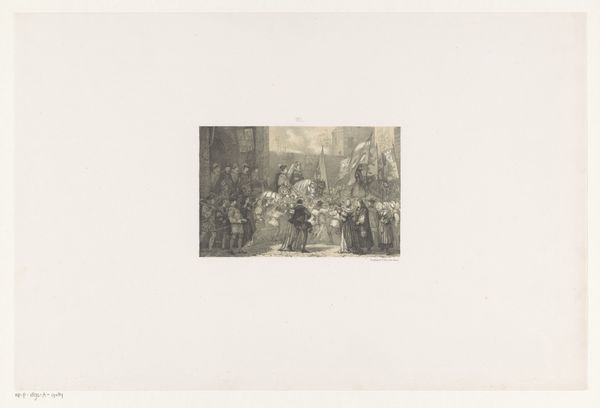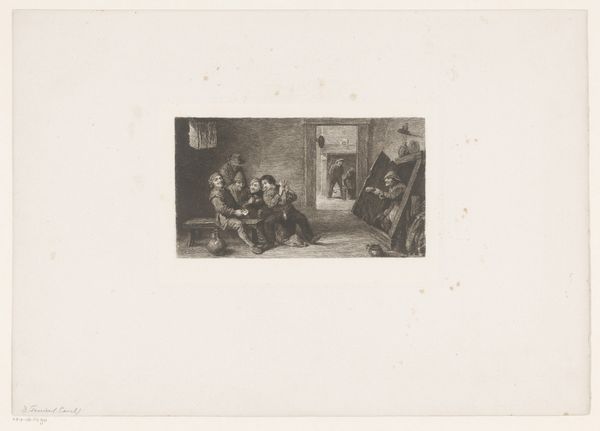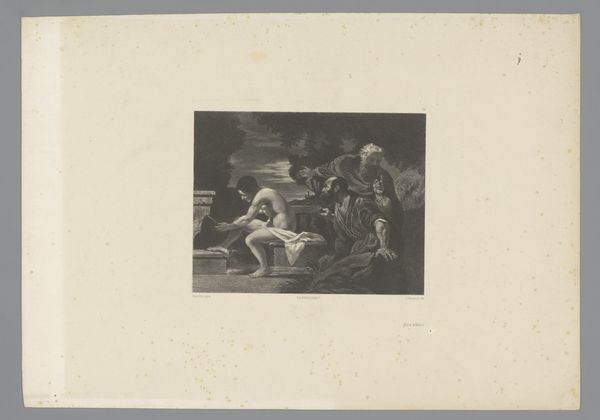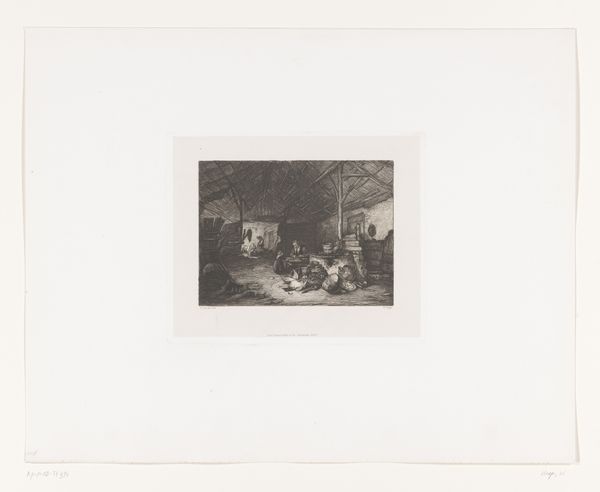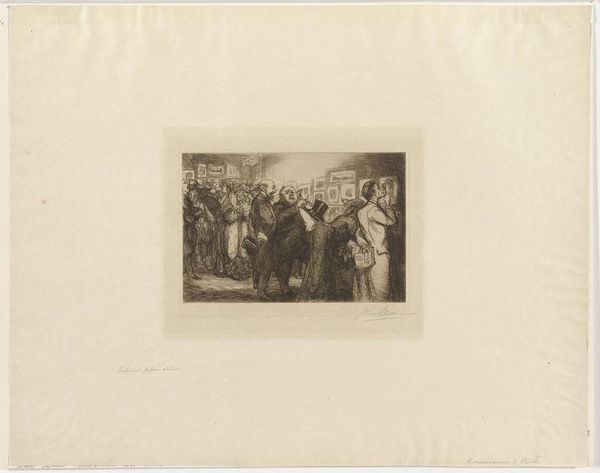
Dimensions: 135 mm (height) x 180 mm (width) (Plademål)
Curator: Let's turn our attention to G.V. Blom's "Hei sa'de Fredmann," an etching made in 1898 currently residing here at the Statens Museum for Kunst. It's quite small, printed with ink on paper. Editor: My immediate impression is that of a secretive gathering, shrouded in darkness. It evokes a feeling of hushed anticipation. What stands out is the concentrated pool of light amidst all the shadow. Curator: Well, the medium itself is crucial to this atmosphere. The artist chose etching, a printmaking process, because of the way you can reproduce drawings and also, and maybe more significantly, because of the unique tonal qualities achievable through acid etching. It would have taken skilled labor to prepare the plate and make the prints. This challenges assumptions about access and value attached to the fine arts compared to reproducible craft. Editor: I find it interesting how the scene is illuminated. Light emanates not only from a singular source but is also seemingly reflected off of faces around a table. It reminds me of paintings by Caravaggio, of that dramatic play between light and dark used to highlight important figures or the crux of a narrative. Does "Fredmann" refer to a specific character or myth perhaps? Curator: Interesting thought, in terms of narrative. The fact that this image, an etching, circulated allows us to speculate how G.V. Blom, making something reproducible, could reach far more people than through one unique painting. How might this wider distribution impacted societal perceptions of such narrative or imagery, its potential use? Editor: Absolutely. In this particular social setting, there's the prominent figure with the raised hand, like a toastmaster or storyteller; the central light is focused almost exclusively on this character's facial features and gesturing hand. The surrounding people are almost absorbed back into the shadows, lending symbolic weight to Fredmann, wouldn’t you agree? Curator: Right. Etching creates a rich surface, using inexpensive materials; therefore it can transform scenes of everyday life into commodities for the 19th-century viewer. A seemingly humble social setting could be widely distributed and consumed, shaping ideas about what is considered valuable in life and art. Editor: So ultimately it's more than just a portrait of Fredmann; it's about power dynamics within a social gathering. It invites us to delve into layers of societal meaning beyond the immediate visual, and Blom harnessed that so eloquently. Curator: Precisely. Considering that, for me, really recontextualizes the image.
Comments
No comments
Be the first to comment and join the conversation on the ultimate creative platform.
